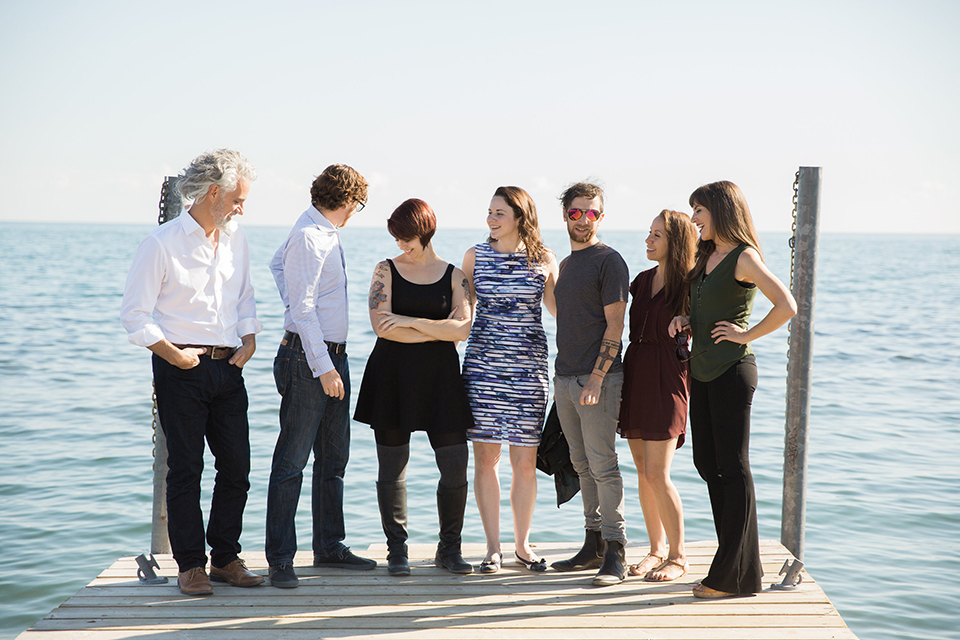When it comes right down to it, the success of any company’s employee volunteering program rests on the ability to form, mobilize, and manage teams across all the regions in which the company operates. Not only is the global spread of the workforce a hurdle, the various departments and business groups can make things very complicated. As you probably know by now, finding the right people to lead and support your program is a foundational element for a successful, scalable volunteer program. Below are the three steps to success in finding and supporting leaders in your employee volunteer program.
Step One: Find the right employees to lead your teams
Stage 1: THE TOURIST
The first stage on the Journey of the Volunteer is one of investigation and curiosity. Like a tourist visiting a new place for the first time, in the first stage a volunteer is not yet sure if this experience is the right fit for them. They cannot be forced or coerced into liking it; instead, they must be given basic, experiential tasks that will allow them to look, see and discover. If they’re ready, they’ll volunteer again and will hopefully continue through to Stage 2 (Traveler) and Stage 3 (Guide). Tourists usually make up about 70 – 80% of any group of volunteers.
No matter how enthusiastic or agreeable people may be, if someone is working through the first stage of their journey as a volunteer, they are not the right person to be leading events or guiding other volunteers. The objective here is to provide the right kind of experiences so that tourists may become travelers.
Stage 2: THE TRAVELER
The second stage is one of meaningful discovery. Like a traveler who has begun to feel a sense of belonging to the place they’ve visited, second stage volunteers begin to internalize their motivation for returning. As they own the experience for themselves, they become ready to take on leadership responsibilities and tasks that require increased commitment. Travelers can be hard to recognize, but they’re worth looking for. Travelers usually make up about 25% of employee volunteers. They’re on their way to becoming advocates and leaders for the volunteer program.
Travelers are excellent candidates for leadership roles if there is a formal development process in place. In step three, we discuss what this should look like.
Stage 3: THE GUIDE
The third stage in the Journey of the Volunteer is one of intentional alignment. Like a guide who introduces friends and strangers alike to the charms of their favorite country, third stage volunteers are motivated entirely by personal, intrinsic reasons. Guides can be trusted to run the program when no other leader is around and will recruit new volunteers without being asked. Guides make up only about 5% of any group of employee volunteers. This group should receive the greatest percentage of time and energy from those responsible for managing employee volunteering.
Obviously, a guide is the perfect choice to lead employee volunteer events. The difficulty is twofold; a) there are so few of them and b) they are always currently invested in some other program or organization. What is required is a conversation to discuss how the company or organization can support their current areas of interest while gaining their contributions towards the objectives of the corporate volunteering program.
Sometimes senior managers appoint people to lead the program at their site or in their region based on availability or their role within the company. Without consideration of the person’s volunteer journey and experience, this strategy always leads to failure. A solution we’ve found very successful to identify team leaders involves a fairly simple interview process.
Potential second and third stage leaders typically possess distinguishing characteristics:
- They already volunteer somewhere – or have in the past for significant periods of time.
- They think everyone who gets into volunteering will love it. Volunteering is a way of life.
- They have strong personal reasons for wanting to volunteer. It’s not about doing something for others as much as it’s about what they get from volunteering – these are people who understand that volunteering isn’t just about helping others, it’s also about how we can grow from the experience of giving of ourselves, and begin to feel as if we truly belong to our communities.
- They regularly invite other people to join their volunteer activities.
- They understand the issues they volunteer for and are eager to share their knowledge with others.
- They have strong opinions about the issue they volunteer for, particularly regarding the use of resources and the types of activities.
Not all employee volunteers are the same and should not be treated the same. If you pay attention, and if you identify which stage your participants are in and respond appropriately, your volunteer events can become transformational experiences. Employees will become better at what they do and who they are, communities will benefit from the efforts of your company, and your company will be filled with more resilient, empathetic and capable people.
Step Two: Engage fellow employees and leading events
With the right people in leadership roles, your volunteer leaders will be eager to engage fellow employees in company-supported or sponsored volunteering activities. One of the first hurdles of organizing and leading a volunteer event is recruiting coworkers. Often, the same people show up over and over – it can be discouraging for volunteer leaders to find and motivate new people to participate. We see this in even the most exemplary corporate volunteering programs. The key to overcoming this hurdle is understanding what motivates people to volunteer.
First, there are two types of motivation: extrinsic and intrinsic. We are extrinsically motivated when we choose to perform a behavior or activity to earn a reward or avoid a punishment. This motivation comes from outside of us and often feels like an “obligation.” We typically describe this feeling with the words “should” or “I have to”.
Intrinsic motivation, on the other hand, involves engaging in a behavior because it is personally rewarding; essentially, performing an activity for its own sake rather than the desire for some external reward. Intrinsic motivation comes from inside us – it’s an expression of who we are. The fascinating thing about intrinsic motivation is that when we experience it, we are highly motivated to learn and explore. This is when humans are at their healthiest. It’s a critical element in cognitive, social, and physical development because by acting on our inherent interests, we grow in knowledge and skill.
Most people who volunteer for the first time do so because of extrinsic motivators. Volunteer leaders need to create an environment that allows volunteers, when they’re ready, to discover their own intrinsic motivators. You can achieve this by offering time for critical reflection at the end of an event with two simple questions:
-
What did you experience?
-
Was it what you expected?
These two simple questions are enough for people to begin assigning meaning to the experience and thereby discover their own intrinsic reasons for participating in volunteering events.
Now, how should leaders promote the volunteer opportunities? Well, the same principles that work in real-life relationships work in digital communication:
- Digital communication is an extension of human relationship. It is not a replacement. Email is a great way to start a conversation about attending an event or as a follow up, but face-to-face human connection will always be the most effective way to invite and remind.
- Amplify your voice by deputizing others to communicate. Leaders should consider the people in their immediate sphere of influence who have expressed interest in employee volunteering. Ask each of them to think of two people in their sphere of influence who may want to learn more (or even join a volunteer activity!) and spread the message, too.
- Listen carefully to your coworkers and your volunteers and pay attention to their emotional cues. Anytime something you enjoy doing becomes something you’ve committed to doing (like helping out with a volunteer project), there’s always a risk of turning play into work. If people seem annoyed or close to burn-out, encourage leaders to check in on how they’re feeling and work together with them to bring back the joy of simply volunteering. One way to bring back the joy is to ask “Why” questions: Why did you volunteer for the first time? Why is it meaningful to you to give back to the community? “Why” turns tasks into meaningful expressions of value.
Step Three: Set your employee volunteer leaders up for success
Leaders of employee volunteering programs need a lot of support to be successful in their role. Admittedly, if you’ve been able to interview and select the right people, they’ll bring with them extensive experience and insight. But corporate volunteering programs are unique because what they do as volunteers may also reflect on who they are as employees. Most people are very aware of the risks and require constant communication ensuring that the actions they take will not adversely affect their career or position within the company.
You need to provide clear policies and guidelines, strong communication, and an easy to use online management tool. Along with regular trainings (usually monthly) these elements are essential components to support an ecosystem of community investment. The most successful volunteer teams also have a support network comprised of fellow employees. This can take the form of peer teams meeting to share successes, barriers and even concerns.
To round out everything we’ve gone over, here’s a final list of success elements to consider for your program:
- Provide a formal orientation and assessment process for new team leads
- Conduct a review process including references, brief interview, orientation and an assessment of previous experience as a volunteer
- Provide practical tools for project development and execution such as email templates (to invite other employees) scripts, guidelines, and planning forms.
- Offer training and other activities that may provide insight on the social or environmental issues the volunteer team is addressing.
- Develop a mentoring process that clearly communicates the purpose, values, goals and expectations of the company’s employee volunteering program. Experienced team leads may be paired up with new team leads for a effective transfer of knowledge.
- Ensure visible support at volunteer projects from senior leadership (remember, everyone is wondering how this ‘really’ affects their career).
Once you’ve found the right people, make sure they are equipped with the right skills to be a successful employee volunteer leader.






